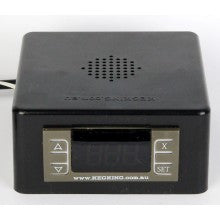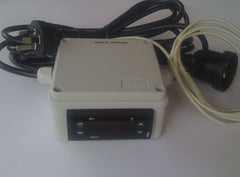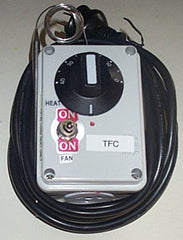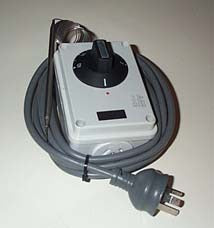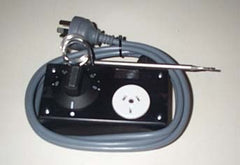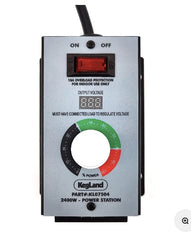Thermostats
6 productsWhy use a thermostat to control your brewing temperature?
Large fluctuations in temperature can cause problems with your yeast, resulting in off flavours. These off flavours can be inappropriate for the type of beer or wine you are making.
Subsequently controlling your fermentation temperature is the single most important thing you can do to improve your brewing or winemaking results. While a small degree of variation is nothing to be concerned about...large fluctuations are detrimental. The various strains of pure brewing and winemaking yeasts on the market today come with recommended fermentation temperatures and best results will be obtained if you can brew according to these recommendations.
This can be done either by controlling a heating device (heat pad or heat belt) if brewing in cold situations, OR controlling a cooling device (fridge or freezer) in hot climates.
The controller has a sensor probe which allows you to ferment out your brew at your desired temperature.
-----------
To control a Fridge or Freezer:
When using a fridge to control your fermentation temperature, simply plug the fridge power cord into the controller and put the probe inside the fridge. Then simply set the temperature controller to your desired temperature.
The fridge will turn on when the temperature inside the fridge rises above the set temperature.
----------------
To control a heat space: It is best to operate a heating device inside an enclosed space. A turned off fridge or purpose built heat box is ideal for this.
When using a heating device turn off the fridge put the heat pad or heat belt inside the fridge and plug the heaters power supply into the controller. Put the temperature probe inside the fridge near the fermenter and set to desired temperature.
The heating device will turn on when the temperature inside the enclosed space drops below the set temperature.
------------
THERMOWELLS: If you wish to place your temperature probe in liquid (rather than in the airspace) then a thermowell is recommended to protect the probe from moisture and to obtain an accurate reading.


